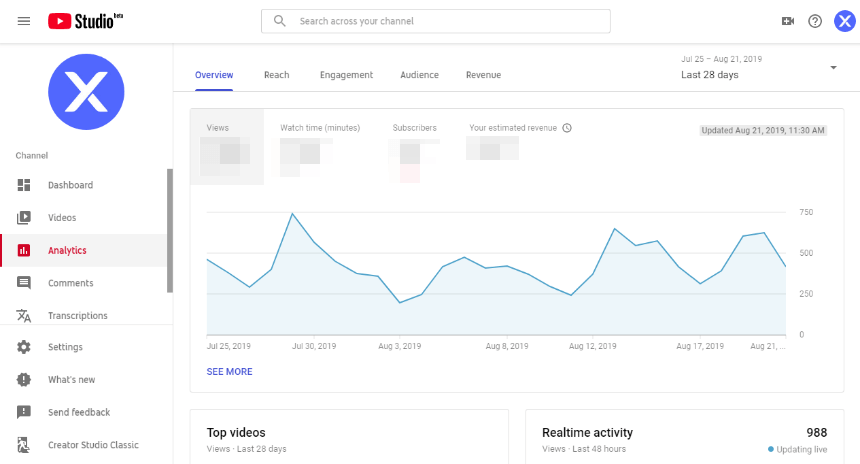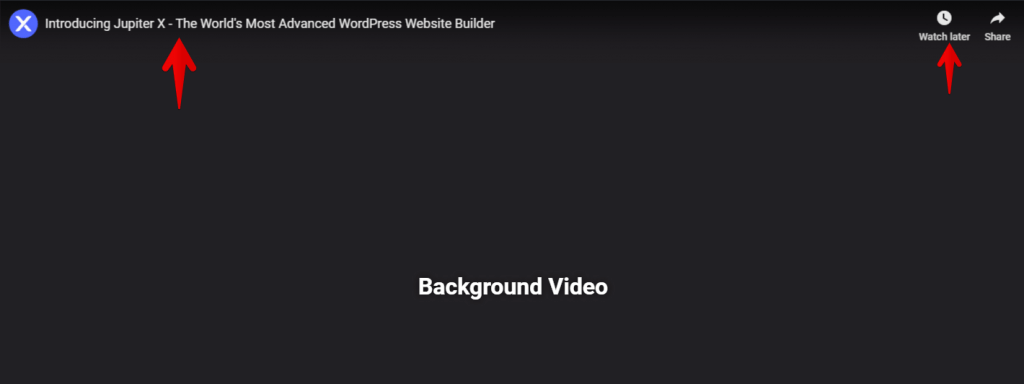So, let’s say that you own a website and know that videos have a better impact on your viewers. You provide an entertaining video including all the main points and you’re now ready to publish it onto your site. Now, what are your options in showing it to your visitors?
Generally speaking, you have two main options:
- Using a socially hosted video
- Using a locally hosted video on your own website
So you might be asking yourself the main advantages of each. If you can clearly grasp the benefits of socially hosted vs locally hosted videos, then you’ll be able to make an informed decision based on your requirements. Let’s review the costs and benefits for each one.
Socially Hosted Videos
YouTube and Vimeo are two famous video sharing websites. Chances are that you already know how to use them. Although other video sharing websites such as Wistia are trending these days, the most popular ones continue to be YouTube and Vimeo. The good news is that it’s easy to embed a video from these websites in Jupiter and Jupiter X.
The process of adding a video from any video sharing website to your WordPress website is as easy as inserting the link of the video into your content or using it in a proper widget in your page builder. Assuming that you have uploaded a video on YouTube and embedded it into your website, you’ll have the following benefits:
Losing fewer server resources
Your server is no longer responsible for responding to video requests, so it’ll for sure use fewer resources. It may save you some money, especially in the cloud-based web hosts that calculate the price based on server usage.
Prepared Statistics
Need some metrics to measure the impact that video made on your viewers? No worries, the video-sharing websites typically provide proper measurement tools so you can even see which countries your visitors are from or what your recent popular videos and comments on your channel were.

Visibility and sharing options through a large community
Yes, the video-sharing website itself will allow for your video to be searched and viewed. This will help you grow your online visitors if you provide the correct description and link your customers to the proper places. Besides that, you’ll have sharing options too. This means that you’ll get a better visitor flow when some users like your video and share it on their social networks or their own websites (if you allow it, that is). This is actually one of the best reasons to use socially hosted videos on your website.
Some other benefits like the more advanced video players (similar to what YouTube offers) will choose the video’s quality depending on the user’s connection speed. Such options might also encourage you to use a socially hosted video over a locally hosted one. But let’s see how much it costs for you to go the social route.
Performance loss
It’s true – your website will have a lower performance if you try GTMetrix or other performance testers out there. The reason is that the video player needs to load, and it usually has a lot of dependencies on different domains which will be requested by your browser and will certainly increase the website loading time. If you use a lot of videos, the result would be even worse than you think.
Video player customization
You cannot customize or control the video player when using a socially hosted video. (However, while Wistia resolved it somehow, this is still valid for YouTube and Vimeo). This becomes worse when you want to show a video on a section background where users should not see the video controls and borders.

Video not available for different visitors
Sometimes, you might be unaware that you have an issue (for example, a trademark issue) with your video. Video sharing websites will detect this and won’t allow users from certain locations to watch the video. If you don’t pay attention to the notifications from YouTube or Vimeo, then this could lead to a loss in your number of viewers.
In general, maintaining your content in separate places like on YouTube and your own website could be a bit tricky. You are hosting a part of your content somewhere else, meaning that you’ll need to maintain it properly and keep it updated based on the video-sharing terms of use. Also, you need to be careful about the ads that are played on your videos. By default, they are disabled for embedded videos, but if you enable them, you need to make sure that you won’t lose customers because of it.
Now let’s take a look at locally hosted videos.
Locally Hosted Videos
By locally hosted videos, I mean that you upload the video on the same website and web host. So, the video file has the same domain name as your main website. Now, assuming that you have prepared your video and want to show it to your customers, let’s see what you will get if you upload it onto your own website. In general, the benefits of socially hosted videos are the costs here and vice versa.
Better speed performance
While you host your video on the same websites, the requests going to your server will be resolved instantly on your own server, and the browsers will not have to deal with other domains to load a video player. It’ll speed up the server response time.
Controlling the Video Player
You’ll have full control of the video player with locally hosted videos. You can deactivate the controls, timelines, and titles, you can mute the video or add a loop to it or even use a very customized video player if you install a video player plugin.

You can make sure that your video is playing for all your users
You’ll no longer lose your customers over the “this video is not available in your region” error message. However, if you pay attention to the video-sharing website notifications, you won’t face it with that problem either. But in case any new terms show up, making your video unavailable for some of your users might cause you to lose some customers until you fix the issues. You won’t come across this issue at all when using locally hosted videos.
Now let’s take a look at some of the downsides of locally hosted videos.
Multiple formats required
You would need to provide two well-known formats for your video to keep your users around: MP4 and Webm. Unlike YouTube or Vimeo where you can freely upload any video format you like and then easily use them on your website, you have to convert your videos into the correct format and codec and then upload it onto your website.
Big files require big resources
Wondering why your monthly traffic usage increased suddenly? One of the reasons might be the videos you have hosted on your website. If each visitor plays the video to the end, the traffic used will be at least equal to the size of the video. So be careful about your server resources when you host a video. Actually, by 2021, probably more than 60% of web traffic will belong to videos.
Statistics are not easily available
Want to know the impression your video made when you uploaded it on your web host? You’ll need third-party plugins or services or extract the raw data from your server logs. This is a bit time consuming even for advanced users. So, if the statistics are very important for you and you don’t want to pay for other services, you might consider using socially hosted videos.
Final Thoughts
Based on the facts above, you need to decide whether socially hosted or locally hosted videos will work better for you. If you’ve already used locally hosted videos and think that the server usage is not worth keeping the videos on the same server, simply migrate your videos to video sharing websites such as YouTube or Vimeo.
On the contrary, if you think that the performance of your website is much more important and will outweigh the benefits of using socially hosted videos, start moving your videos to your own website. This article will help you decide wisely about the way you deal with your own videos.



1 Comment
You forgot one big important factor to consider. Relying on Youtube and other third party platforms means you are in their hands. Youtube often issue bogus strikes and their manual review is a joke. Your channel can be gone at any point, even several years old videos can get strikes and be deleted. Not even channels with millions of subscribers are safe. If you can, the best practice long term might be to host your videos locally.